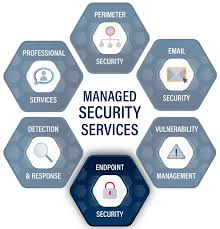Get managed IT vs in-house IT Model Right for Growth
In 2025, choosing between managed IT vs in-house IT is one of the most strategic decisions a U.S. small business can make. This isn’t just about tending to technology—it’s about balancing cost efficiency, cybersecurity, scalability, and expert support. With cyber threats evolving, cloud migration accelerating, and technology budgets rising, selecting the right IT framework can influence your business’s stability and competitive edge. This guide by Remote Expert Solutions (RES) offers a clear comparison to help small business owners in the USA make a smart choice.
Understanding the Options managed IT vs in-house IT
What Are Managed IT Services?
Managed IT services for small businesses in the USA means outsourcing your IT operations to a provider. For a flat monthly fee, you get help desk support, proactive monitoring, cybersecurity, cloud backup, and strategic IT planning. RES delivers enterprise-level technology support without the complexity and cost of running an internal team.
What Is In‑House IT?
An in-house IT team involves hiring full-time staff to manage your hardware, software, networks, and support internally. While this provides full control and physical presence, it also carries high staffing costs, training overhead, and limitations in accessing specialized expertise.
Cost Comparison: managed IT vs in-house IT What Makes Sense in 2025?
Salaries for in-house IT professionals in the U.S. range from $75,000 to $120,000 annually. Adding benefits, training, and infrastructure easily pushes the total cost beyond $200,000 for a small internal team. In contrast, managed IT services typically cost $100–$300 per user per month, translating into $18,000–$50,000 annually for a 15-person business. The predictable pricing includes continuous support, cybersecurity, remote assistance, and monitoring—all without hidden fees.
Flexibility & Scalability: Staying Agile
A major advantage of managed IT services for SMBs is flexibility. You can scale up or down as your business grows or changes. Whether you’re adding new team members, opening a remote office, or shifting to hybrid work, your IT infrastructure adjusts without delays. In contrast, growing or shrinking an in-house team requires hiring cycles, costs, and often downtime.
Expertise & Security: Accessing Pro-Level Support
Modern business technology demands expertise in cybersecurity, cloud tools, disaster recovery, and compliance. Many in-house IT teams cover general issues but lack specialized knowledge in areas like advanced endpoint protection or regulatory audits. Managed IT providers like RES bring certified experts in each discipline, giving small businesses enterprise-level defense and guidance.
Proactive Support vs Reactive Problem‑Solving
Managed IT operates proactively—real-time monitoring, automated alerts, patching, and threat detection reduce downtime before it affects your operations. In-house teams often react to issues as they happen, which can lead to service delays and reduced productivity during crisis periods.
Cybersecurity: Why managed IT vs in-house IT
Cyber threats like ransomware, phishing, and insider threats increasingly target small businesses. Managed IT security services include round-the-clock monitoring, firewall management, encryption, and staff training. These protections, built into monthly plans, offer peace of mind that many small in-house teams struggle to provide affordably.
Business Continuity & Disaster Recovery
If hardware fails or data is compromised, managed IT ensures fast recovery through regular backups, remote recovery processes, and redundancy systems. In-house IT teams may not have the resources to test disaster preparedness regularly. RES’s continuity solutions ensure minimal downtime even during major disruptions.
Daily Efficiency & Focus on Growth
With IT managed by experts, your team can focus on core tasks like sales, marketing, and service delivery—rather than troubleshooting technical issues. Managed IT supports fast resolution of support tickets, software updates, and system maintenance, freeing up internal staff to focus on business growth.
Final Verdict: Smart Strategy for U.S. Small Businesses
While in-house IT offers control and presence, for most U.S. small businesses, managed IT services prove more effective, affordable, and scalable. MSPs offer predictable cost structures, proactive security, and expert support. Managed services like those from RES help U.S. SMBs scale confidently, without technology becoming a barrier.
Why RES Is the Right U.S. Partner
- Transparent pricing and scalable plans
- 24/7 support and remote monitoring
- Enterprise-grade cybersecurity measures
- Cloud backup, compliance, and disaster recovery
- Strategic IT consulting aligned with your growth
FAQs: managed IT vs in-house IT services
Q1: What are managed IT services for small businesses?
Outsourced IT support covering help desk, monitoring, cybersecurity, backups, and consulting for a fixed monthly price.
Q2: What does it cost in 2025?
Typically between $100 and $300 per user per month, depending on service requirements.
Q3: Are in-house IT teams more cost-effective?
Usually not. When expenses like salaries, benefits, equipment, and training are added, in-house IT costs significantly more.
Q4: What’s the biggest benefit?
The strongest advantage is proactive support—issues are prevented before they disrupt operations.
Q5: Are small businesses at risk from cyberattacks?
Yes—small businesses experience a disproportionate number of cyber incidents. Managed IT includes cybersecurity protocols that mitigate these risks.
Q6: Can managed IT services adjust as I grow?
Absolutely. You can increase service tiers as you add users, locations, or services—without hiring delays or infrastructure changes.
Q7: Can I smoothly switch from in-house to managed IT?
Yes. Providers like RES plan migrations carefully—assessing current systems, onboarding data, and helping with transition.
Q8: What if I still want some in-house IT staff?
Hybrid models are common—many businesses keep a small internal resource while relying on a managed service provider for advanced support and monitoring.
Contact Us
Admin@remotexpertsolutions.com






